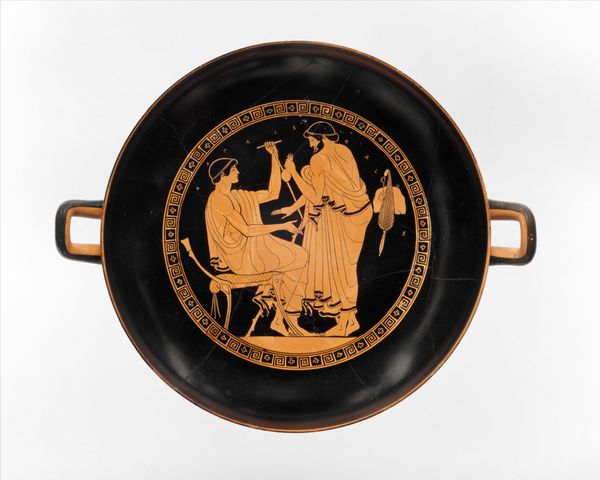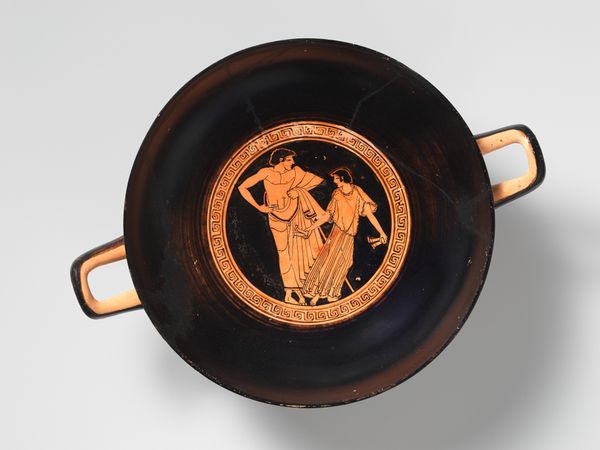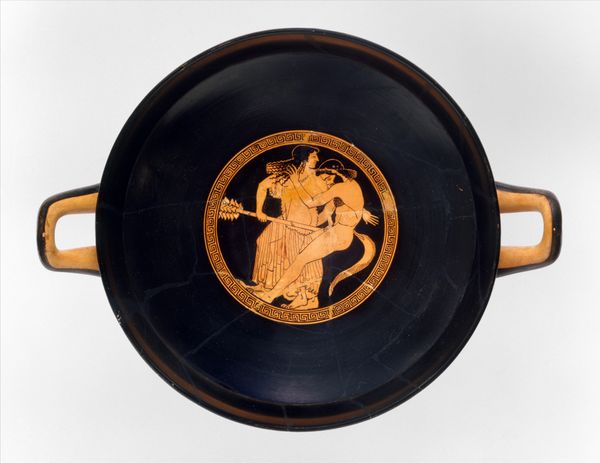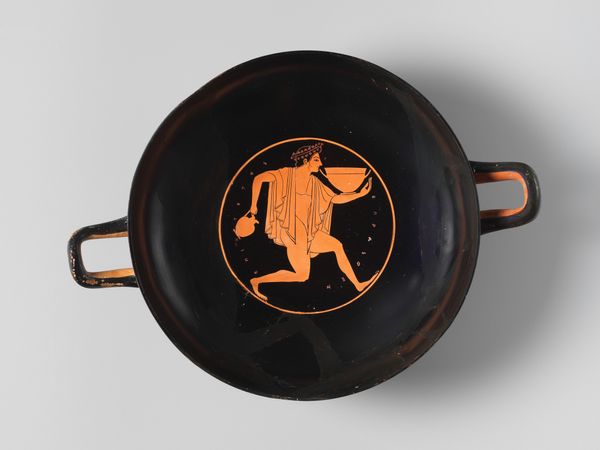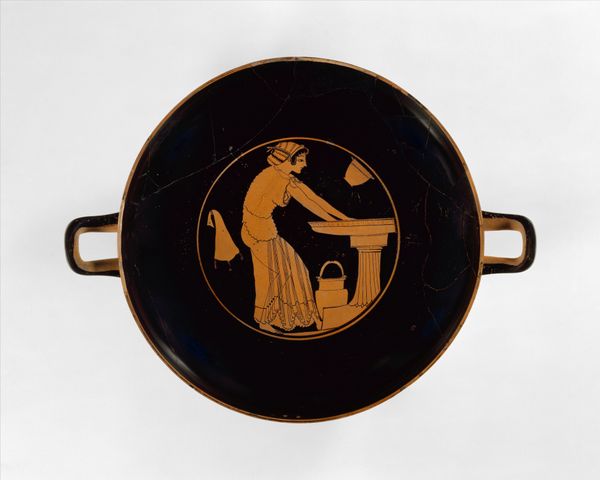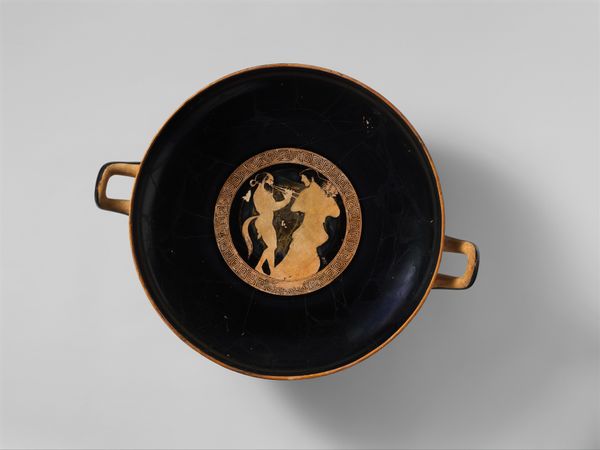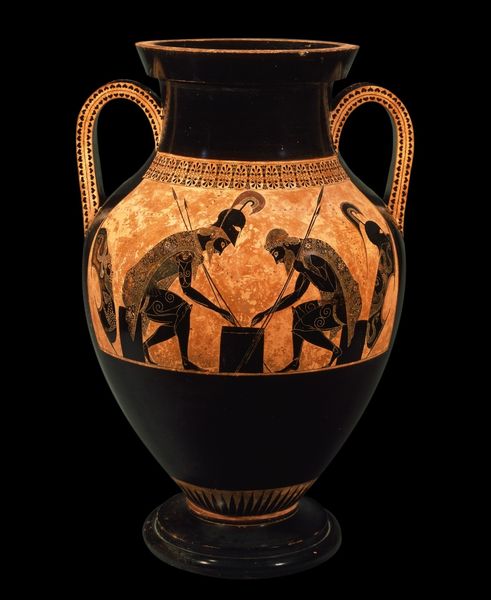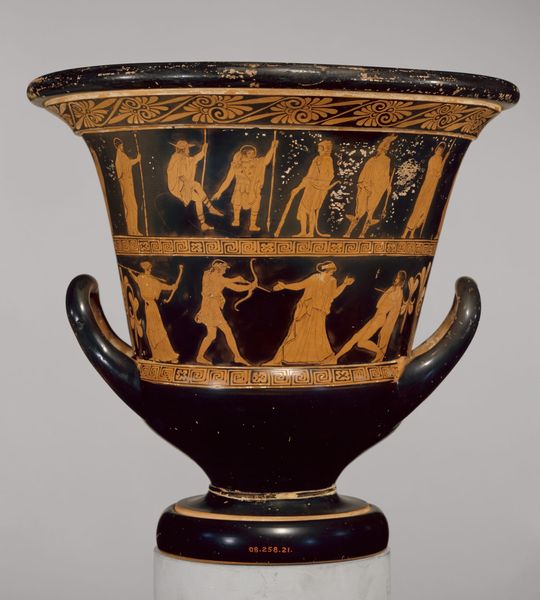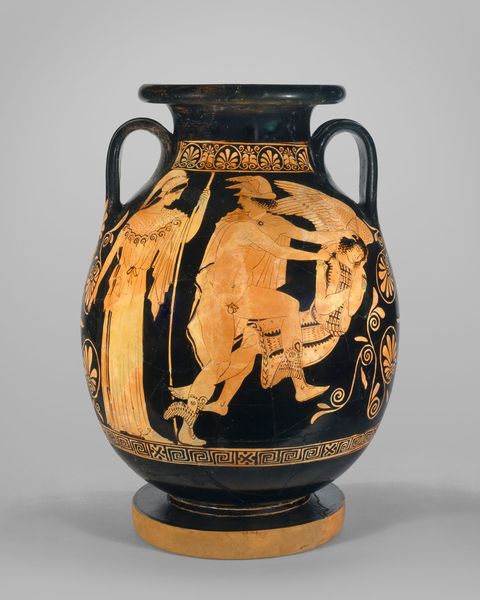
Two fragments of a terracotta kylix, join 1979.11.9; 1980.304; 1988.11.5; 1989.43; 1990.170; 1995.540 490 BC
0:00
0:00
drawing, tempera, ceramic, earthenware
#
portrait
#
drawing
#
tempera
#
pottery
#
greek-and-roman-art
#
ceramic
#
figuration
#
earthenware
#
ancient-mediterranean
#
ceramic
#
earthenware
Dimensions: joined with 1979.11.9: 13 in. (33 cm)
Copyright: Public Domain
Editor: Here we have fragments of a terracotta kylix made around 490 BC and attributed to Hieron. It's mostly black, but in the center, there’s a reddish-orange scene of figures interacting. There's a real sense of drama or maybe even confrontation. What do you see in this piece? Curator: Well, I immediately think about the sociopolitical function of pottery in ancient Greece. These weren't just decorative objects; they were narrators of power dynamics. Look at the scene depicted. It presents what appears to be a judgment or perhaps even a transaction, where female bodies are placed at the center. Consider who was drinking from this kylix and the types of stories it reinforced with each symposium. Editor: So, you're saying the images weren't just art for art’s sake? Curator: Exactly. We have to consider the environment in which these objects circulated. These kylixes would’ve been conversation starters, and instruments for solidifying cultural attitudes around gender, status, and identity. We also have to acknowledge our inherent bias as modern viewers. What would the figures represented think of their image displayed in the Metropolitan Museum? Editor: That makes me rethink the scene completely. It’s easy to see the aesthetic qualities, but less obvious to think about the power structures at play. How relevant would you say it is to think of the viewer and artist bias when studying Greek pottery? Curator: Absolutely crucial. To extract meaning from these artifacts, we need to deconstruct layers of historical perception. Ask yourself, who has historically controlled the narrative surrounding Ancient Greece, and whose voices are marginalized? By questioning this, we confront the biases that shaped how we understand art history. Editor: That’s fascinating, thank you for shifting my perspective! Curator: My pleasure, it’s only by critically interrogating the past, can we engage more thoughtfully with the present.
Comments
No comments
Be the first to comment and join the conversation on the ultimate creative platform.
